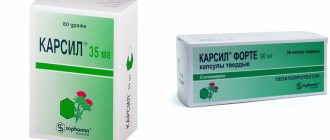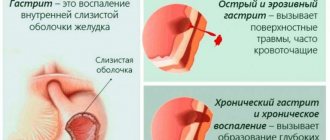Bacterial infections
The causative agents of bacterial diarrhea of the invasive and secretory type are single-celled microorganisms (Salmonella, Shigella, Clostridia and others). They are able to multiply on the surface and in the deeper layers of the intestinal wall, and also penetrate into the blood, causing the development of bacteremia. So-called foodborne illnesses, the development of which is caused by various types of opportunistic microorganisms that can produce toxins in food, can also cause bacterial diarrhea. The trigger mechanism of the disease is inflammation of the small or large intestine.
Symptoms
Bacterial diarrhea occurs with severe symptoms of acute intoxication:
- significant deterioration in health,
- headaches,
- nausea,
- vomiting,
- an increase in body temperature to +38…+39 °C.
Infections caused by bacteria, leading to accelerated peristalsis and rapid evacuation of intestinal contents, are accompanied by painful tenesmus (painful false urge to defecate), spastic pain in the abdomen, and the development of fermentative dyspepsia (a pathological condition in which the human intestine produces alcohol and carbon dioxide, which are formed due to the breakdown of carbohydrate foods). Pathological impurities (mucus, blood, particles of pus) are present in the stool. Toxic waste products of microorganisms, absorbed through the intestinal walls into the blood, cause the development of severe syndromes of infectious endotoxicosis and become the main cause of dehydration.
Diarrhea due to infectious diseases of a bacterial nature in some cases may be accompanied by meningeal symptoms or severe muscle and osteoarticular pain.
Diagnosis of bacterial intestinal infections
To identify the true cause of the disease, doctors usually prescribe laboratory testsiii aimed at detecting the pathogen in feces and vomit, gastric lavage and food debris, presumably the source of infection. If the development of salmonellosis is suspected, a bacteriological blood test (blood culture) is performed in parallel. In the absence of growth of pathogenic bacterial microflora, virological studies are additionally carried out to clarify the etiology of viral diarrhea.
Treatment of bacterial diarrhea
Treatment of infectious diarrhea of bacterial origin is prescribed by a doctor. It is usually carried out in a complex that includes therapeutic nutrition, pathogenetic, etiotropic and symptomatic therapy. Pathogenetic therapy drugs include rehydrants (medicines to restore fluid and electrolyte balance), enterosorbents (drugs that have the ability to bind and remove bacteria and microbial toxins from the body), enzymes, probiotics (bifidobacteria and lactobacilli). Etiotropic drugs (antibiotics) are prescribed strictly according to medical indications, taking into account the sensitivity of the pathogen. Antispasmodic, antinausea, antiemetic and antidiarrheal drugs are used as symptomatic treatment drugs aimed at eliminating individual symptoms of infectious diarrhea.
To normalize intestinal function, reduce the frequency of the urge to defecate and better retain feces, experts can recommend IMODIUM® Express. Easily adsorbed from the gastrointestinal tract, the antidiarrheal drug, intended for adults and children over 6 years of age, helps to reduce or completely eliminate negative intestinal symptoms.
In the case of a clinically pronounced course of the disease, the patient is hospitalized.
Up to contents
Pathogenesis
It is assumed that the place of introduction of the pathogen is gland.-kish. tract, with the Crimea the main functional-morphol. disorders in patients D. v. The diarrhea that develops in patients is caused by impaired digestion and absorption, as well as impaired intestinal motor function. Excessive excretion of water and salts in feces causes dehydration only in patients with severe disease. It is the most important prerequisite for the development of acute cardiovascular failure. In patients with D. v. with symptoms of hypovolemia and acute peripheral circulatory failure, temporary renal dysfunction may develop.
Viral infections
Modern virology has data on the presence of several groups of viruses that can provoke the development of viral diarrhea in children and adults. This list includes rotavirus, astro-, adeno-, calciviruses, cryptosporidium and others that cause symptoms of intestinal flu. In the Russian Federation, a disease caused by rotavirus infection is common. Just like the causative agent of classical influenza, rotavirus is activated during the cold season, i.e., it has a pronounced autumn-winter seasonality. Rotavirus infection has several synonymous names: intestinal flu, stomach flu, rotavirus gastroenteritis, rotavirosis.
Routes of transmission of intestinal flu:
- fecal-oral (through contaminated water or food);
- airborne (along with particles of infected saliva when coughing, sneezing, talking).
The source of infection is a sick person and a virus carrier. Complications from intestinal flu are very rare (the average duration of the disease is 4–5 days).
Symptoms
Rotavirus disease received the name “intestinal flu” due to the combination of respiratory and intestinal symptoms. It begins acutely, with a sudden increase in body temperature, chills, sore throat and sore throat, which is subsequently joined by a runny nose and cough.
In addition, intestinal flu also has characteristic signs of a digestive disorder: loud rumbling, diffuse or localized abdominal pain, flatulence, diarrhea with a frequency of bowel movements reaching 15 times a day. As with other viral infections, diarrhea syndrome is accompanied by fever, nausea and vomiting. The disease can occur in mild, moderate and severe forms.
Note: some adult patients suffering from intestinal flu are urgently hospitalized with a diagnosis of “acute abdomen” due to severe pain. At the same time, in 30% of cases the disease is asymptomatic.
Diagnostics
Intestinal flu in adults and children is similar to other, more dangerous diseases. Therefore, the development of diarrhea necessarily requires clarification of the causal factor that provoked its occurrence. When making a diagnosis, doctors usually conduct a virological study using the following methods: PCR, RSK, RNHA (passive hemagglutination), immunofluorescence. A clinical blood test may also be performed (in the presence of intestinal flu symptoms, an increase in the number of leukocytes with a neutrophil shift to the left is observed).
Etiology
The etiology has not been definitively established. There is reason to believe that the causative agent of this disease is a virus. As a result of studies using newly developed methods, Blacklow et al. (1972) came to the conclusion that etiol, a factor, is the so-called. Normalk-agent diameter, less than 66 nm, does not have an outer shell or membrane containing lipids, is resistant to acids (pH 2.7), relatively thermostable (withstands heating up to 60° for 30 minutes). Normalk agent causes short-term immunity to reinfections and resembles viruses of the parvovirus group.
Pathological anatomy
Morfol, changes in the mucous membrane of the stomach and intestines of patients D. v. studied on biopsy material obtained intravitally. As N.B. Shalygina (1973) notes, in the gastric mucosa there is a picture of acute catarrh with congestive congestion of the capillaries, moderate serous edema of the tissue, mild lymphocytic and eosinophilic leukocyte infiltration of the mucous membrane, as well as significant damage to the cellular elements of the gastric (intrinsic) glands. Morfol, changes in the mucous membrane of the small intestine are characterized by acute capillary plethora up to stasis and the development of plasmorrhagia in the stroma of the intestinal villi. The number of goblet cells in the villi and secerated mucus is excessive. The stroma of the mucous membrane is significantly infiltrated with plasma cells and lymphocytes with an admixture of eosinophils. Occasionally, small eosinophilic-leukocyte perivascular infiltrates are found near the intestinal glands (crypts). The epithelium of the intestinal villi is sometimes vacuolated, but generally preserved. Changes in the mucous membrane of the colon do not have any characteristic features.
Prevention
Early detection and isolation of patients, wet cleaning and ventilation of premises. It is advisable to wear gauze masks by health workers interacting with patients.
Bibliography:
Zhdanov V.M., Gavrilov V.I. and Muzhenkova N.P. On the etiology of viral gastroenteritis, Zhurn., mikr., epid, and immun., No. 6, p. 78, 1955; Carpenter S. et al. Clinical and physiological observations during an epidemic outbreak of non-vibrio cholera-like disease in Calcutta, Bull. WHO, vol. 33, no. 5, p. 695, 1965; Mashilov V.P. Epidemic gastroenteritis and its recognition, in the book: Relevant, issue. epidemiological and infectious diseases, ed. V. I. Pokrovsky, part 1, p. 132, M., 1975; Mashilov V. P. et al. Functional state of the small intestine in patients with epidemic gastroenteritis, in the book; Relevant, issue, epid., ed. V. I. Pokrovsky, V. 3, p. 281, M., 1973; Plankina E. A. On the epidemiology of viral gastroenteritis, Zhurn, mikr., epid, i immun., No. 6, p. 86, 1955; A d- 1 e g JL a. Z i with k 1 R. Winter vomiting disease, J. infect. Dis., v. 119, p. 668, 1969; A gus SG ao Increased jejunal Jg, a synthesis in vitro during acute infections nonbacterial gastroenteritis, Amer. J. dig. Dis., v. 19, p. 127, 1974; Black-low NR ao Acute infections nonbacterial gastroenteritis, etiology and pathogenesis, Ann. intern. Med., v 76, p. 993, 1972, bibliogr.
V. P. Mashilov.
Treatment
Currently, specific treatment regimens for rotavirus infection have not been developed. With a mild course of the disease, the symptoms go away on their own. Patients are advised to diet and take medications to restore fermentation in the digestive system. Enterosorbents that mitigate the symptoms of diarrhea and vomiting can help cope with the symptoms of a viral infection. If the patient is dehydrated, rehydration therapy with the use or intravenous administration of saline solutions is indicated.
Diagnosis
The diagnosis is made on the basis of wedge-epidemiol, data taking into account the negative results of bacterial. examinations for intestinal infectious diseases of patients and persons in contact with them. The most typical are sudden onset, acute gastroenteritis, watery foamy stool without blood: hyperemia and granularity of the mucous membrane of the soft palate, palatine arches and uvula; leukopenia, eosinophilia, relative lymphocytosis, monocytopenia.
D.v. should be differentiated from dysentery (see), cholera (see), food toxic infections (see Food toxic infections), intestinal form of adenoviral diseases (see) and enteroviral diseases (see) and other diseases accompanied by diarrhea.
Is it possible to completely cure infectious diarrhea?
In most cases, the disease ends in complete recovery. Sometimes it may take several weeks or even months before the function of the gastrointestinal tract is completely stabilized. Genetically predisposed people may experience the so-called. reactive arthritis (formerly Reiter's syndrome), that is, inflammation of several joints and tendon attachments, mainly of the lower extremities, asymmetrically (on one side). Reactive arthritis can appear after an infection of the gastrointestinal tract, that is, for example, infectious diarrhea, as well as after infections of the genitourinary system.
How common is infectious diarrhea?
Infectious diarrhea is the second most common cause of illness and death (after cardiovascular diseases) in the world. This mainly concerns poor societies with a low standard of living, as well as periods of war and natural disasters such as drought or flood. Over the course of a year, rotavirus infections cause 120–140 million cases of illness and about 600 thousand deaths, primarily in young children.
Infectious diarrhea can occur as an isolated disease or in the form of group poisoning after joint exposure, that is, contact with an infectious factor. New epidemiological problems are associated with:
- infections with drug-resistant bacteria and greater toxicity to the intestine
- globalization, facilitating exposure to factors from other regions of the world
- an increase in the population of people with impaired immunity and elderly people with increased sensitivity to infection.
The type of food poisoning is also due to the seasonality of the occurrence of infections. Infections caused by bacteria of the genera Salmonella and Shigella occur in the summer months, Campylobacter jejuni infections in the spring, and Yersinia enterocolitica and rotavirus infections in the winter.







